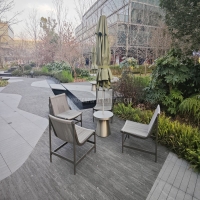Welcome to the website for landscape facilities products and knowledge.
How do climate conditions affect the lifespan of rattan-based landscape sculptures?
Rattan-based landscape sculptures add natural elegance to gardens and outdoor spaces, but their longevity is heavily influenced by climate conditions. Exposure to sunlight, humidity, rain, and temperature fluctuations can significantly alter their durability.
Sunlight & UV Exposure
Prolonged exposure to direct sunlight causes rattan fibers to dry out, leading to brittleness and cracking. UV rays accelerate fading and weaken the material over time. Protective sealants or shaded placements can mitigate damage.
Humidity & Moisture
High humidity and frequent rain promote mold growth and rot in untreated rattan. Tropical climates may accelerate decay, while arid regions may cause excessive drying. Waterproof coatings and proper drainage help extend lifespan.
Temperature Extremes
Freezing temperatures make rattan brittle, while excessive heat warps its structure. Seasonal storage or climate-resistant treatments are recommended in regions with harsh winters or scorching summers.
Wind & Physical Wear
Strong winds can loosen woven rattan fibers, leading to structural instability. Regular maintenance, such as tightening bindings and applying protective finishes, preserves integrity.
To maximize durability, choose high-quality, treated rattan or synthetic alternatives for extreme climates. Regular cleaning and protective treatments will ensure these sculptures remain beautiful for years.
Related search:

Recommendation
Metal structure rattan chair without armrests for single person, with woven seat and backrest.